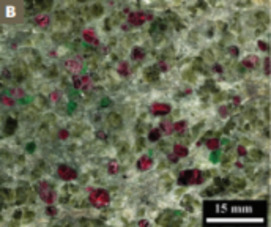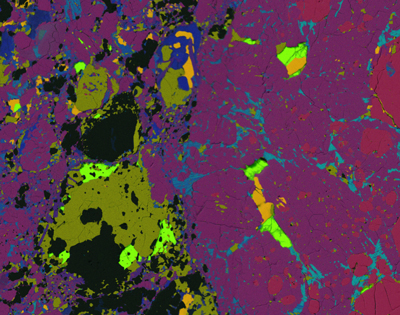Garnet in the Earth’s Mantle
Aluminous garnet, (Mg,Fe2+,Ca)3(Al,Cr)2Si3O12, is an important constituent of mantle peridotite (~10%) and of the other abundant upper mantle rock, eclogite (~50%). Its unusual crystal chemistry means that it strongly prefers some trace elements and confers a “garnet signature” on mantle melts. As depth increases from 250 to 600 km, garnet increases in abundance in mantle rocks, dissolving large fractions of the other silicates and becoming Si rich (majoritic). These compositional changes are observed in some garnets found as inclusions in diamond. Garnet disappears from mantle assemblages at about 700 km depth, where it is replaced by an even denser silicate, perovskite.
Garnet in the Earth’s Mantle Read More »



